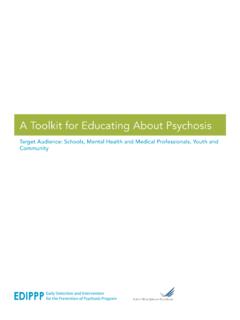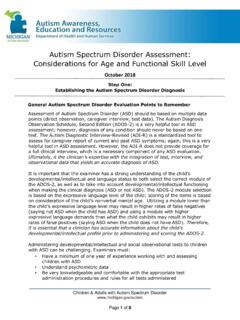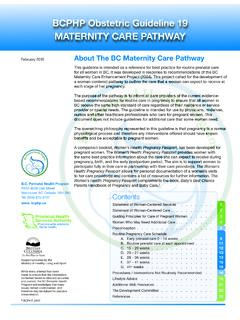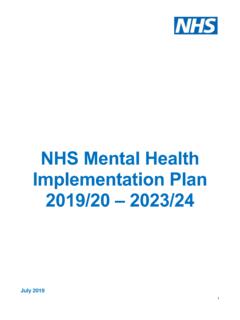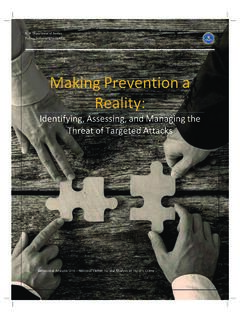Transcription of MATERNAL MENTAL HEALTH - World Health Organization
1 MATERNAL MENTAL HEALTH & CHILD HEALTH AND DEVELOPMENT Literature review of risk factors and interventions on Postpartum Depression DEPARTMENT OF MENTAL HEALTH AND SUBSTANCE ABUSE 2008 CHAPTER 1: RISK FACTORS FOR POSTPARTUM DEPRESSION Emma Robertson PhD Nalan Celasun PhD Donna E Stewart MD FRCPC University HEALTH Network Women s HEALTH Program 2003 Citation: This chapter should be cited as: Robertson, E., Celasun, N., and Stewart, (2003). Risk factors for postpartum depression. In Stewart, , Robertson, E., Dennis, , Grace, , & Wallington, T. (2003). Postpartum depression: Literature review of risk factors and interventions. Contact: For further information regarding this chapter, please contact: Emma Robertson PhD at or Donna E.
2 Stewart MD FRCPC at Women s HEALTH Program Financial assistance by HEALTH Canada 10 CHAPTER 1: RISK FACTORS FOR POSTPARTUM DEPRESSION Table of Contents LIST OF TABLES 13 LIST OF FIGURES 14 Introduction 15 Postpartum Affective Illness 15 Postpartum Period & Increased Risk of Severe Psychiatric Illness 15 Clinical Classification of Postpartum Illnesses 16 Postpartum Affective Disorders 16 Postpartum Blues 16 Postpartum Depression 17 Puerperal or Postpartum psychosis 17 Postpartum Depression: Clinical & Diagnostic Issues 18 Prevalence 18 Clinical Presentation 19 Diagnosis 19 Defining Temporal Criteria 20 Diagnostic Definitions 21 Assessment of Depression: Clinical & Self Report Measures 22 Outcomes 23 Culture & Postpartum Depression 23 Childbirth & Culture 23 Aims of Cross Cultural Research 23 Results from Cross-Cultural Studies 24 Cultural Differences in the Presentation of Psychiatric Symptoms 24 Risk Factors for Postpartum Depression: Results from Quantitative Studies 25 Identification & Evaluation of Literature on Risk Factors for Postpartum Depression 25 Contributing Factors to Postpartum Depression 34 Multifactorial Models of Psychiatric Illness 34 Biological Factors 34 Obstetric Factors 35 Clinical Factors 37 11 Psychological Factors 39 Social Factors 40 Infant Variables 46 Factors not Associated 46 Contributing Factors to the Development and Recovery from Postpartum Depression.
3 Metasynthesis of Qualitative Studies 52 Incongruity Between Expectations and Reality of Motherhood 52 Spiraling Downward 53 Pervasive Loss 54 Making Gains 55 Summary of Metasynthesis of Qualitative Literature 55 Summary of Risk Factors for Postpartum Depression 56 Gaps in the Literature 58 Conclusions 59 References 62 12 CHAPTER SUMMARY Introduction / Background Postpartum non-psychotic depression is the most common complication of childbearing affecting approximately 10-15% of women and as such represents a considerable public HEALTH problem affecting women and their families. This chapter will provide a synthesis of the recent literature pertaining to risk factors associated with developing this condition. Methods Databases relating to the medical, psychological and social science literature were searched using specific inclusion criteria and search terms, to identify studies examining risk factors for postpartum depression.
4 Studies were identified and critically appraised in order to synthesize the current findings. The search resulted in the identification of two major meta-analyses conducted on over 14,000 subjects, as well as newer subsequent large-scale clinical studies. The results of these studies were then summarized in terms of effect sizes as defined by Cohen. Key Findings The findings from the meta-analyses of over 14,000 subjects, and subsequent studies of nearly 10,000 additional subjects found that the following factors were the strongest predictors of postpartum depression: depression during pregnancy, anxiety during pregnancy, experiencing stressful life events during pregnancy or the early puerperium, low levels of social support and having a previous history of depression.
5 Moderate predictors were high levels of childcare stress, low self esteem, neuroticism and infant temperament. Small predictors were obstetric and pregnancy complications, negative cognitive attributions, quality of relationship with partner, and socioeconomic status. Ethnicity, MATERNAL age, level of education, parity and gender of child (in Western societies) were not predictors of postpartum depression. Critical appraisal of the literature revealed a number of methodological and knowledge gaps that need to be addressed in future research. These include examining specific risk factors in women of lower socioeconomic status, risk factors pertaining to teenage mothers, and the use of appropriate instruments for assessing postpartum depression in different cultural groups.
6 13 LIST OF TABLES Table Page 1-1. Postpartum affective disorders: Summary of onset, duration & treatment 16 1-2. Search terms used to identify relevant literature 27 1-3. Databases searched using search terms to identify literature 27 1-4. Critical appraisal guide 28 1-5. Summary of meta-analysis by O Hara & Swain (1996) 32 1-6. Summary of meta-analysis by Beck (2001) 33 1-7. Summary of select primary studies not included by meta-analyses 48 1-8. Strong predictors of postpartum depression 60 1-9. Moderate predictors of postpartum depression 61 1-10. Small predictors of postpartum depression 61 14 LIST OF FIGURES Figure Page 1-1. DSM-IV criteria for major depressive disorder 20 1-2. Keywords, databases and years included in Beck s meta-analysis (2001) 30 15 Introduction The postnatal period is well established as an increased time of risk for the development of serious mood disorders.
7 There are three common forms of postpartum affective illness: the blues (baby blues, maternity blues), postpartum (or postnatal) depression and puerperal (postpartum or postnatal) psychosis each of which differs in its prevalence, clinical presentation, and management. Postpartum non-psychotic depression is the most common complication of childbearing affecting approximately 10-15% of women and as such represents a considerable public HEALTH problem affecting women and their families (Warner et al., 1996). The effects of postnatal depression on the mother, her marital relationship, and her children make it an important condition to diagnose, treat and prevent (Robinson & Stewart, 2001). Untreated postpartum depression can have adverse long-term effects.
8 For the mother, the episode can be the precursor of chronic recurrent depression. For her children, a mother s ongoing depression can contribute to emotional, behavioral, cognitive and interpersonal problems in later life (Jacobsen, 1999). If postpartum depression is to be prevented by clinical or public HEALTH intervention, its risk factors need to be reliably identified, however, numerous studies have produced inconsistent results (Appleby et al.,1994; Cooper et al., 1988; Hannah et al.,1992; Warner et al., 1996). This chapter will provide a synthesis of the recent literature pertaining to risk factors associated with developing this condition. Postpartum Affective Illness Postpartum Period & Increased Risk of Severe Psychiatric Illness The association between the postpartum period and mood disturbances has been noted since the time of Hippocrates (Miller, 2002).
9 Women are at increased risk of developing severe psychiatric illness during the puerperium. Studies have shown that a woman has a greatly increased risk of being admitted to a psychiatric hospital within the first month postpartum than at any other time in her life (Kendell et al.,1987; Paffenbarger, 1982). Up to of all psychiatric hospital admissions of women occur during the postpartum period (Duffy, 1983). However recent evidence from epidemiological and clinical studies suggests that mood disturbances following childbirth are not significantly different from affective illnesses that occur in women at other times. Population based studies in the USA and the United Kingdom, for instance, have revealed similar rates of less severe depressive illness in puerperal and nonpuerperal cohorts (Cox et al.)
10 ,1993; Kumar & Robson, 1984; O'Hara et al.,1991a). Also, the clinical presentation of depression occurring in the puerperium is similar to major depression occurring at other times, with symptoms of depressed mood, anhedonia and low energy and suicidal ideation commonplace. 16 Clinical Classification of Postpartum Illnesses There has long been controversy as to whether puerperal illnesses are separate, distinct illnesses (Hamilton, 1982; Hays & Douglass, 1984; Hays, 1978) or episodes of a known psychiatric disorder such as affective disorders or schizophrenic psychoses, which occur coincidentally in the puerperium or are precipitated by it (Platz & Kendell, 1988; Robling et al., 2000). Brockington (1988) argues that childbirth should be seen as a general stressor, like any other life event which can trigger an attack of illness across the whole spectrum of psychiatric disorders.










